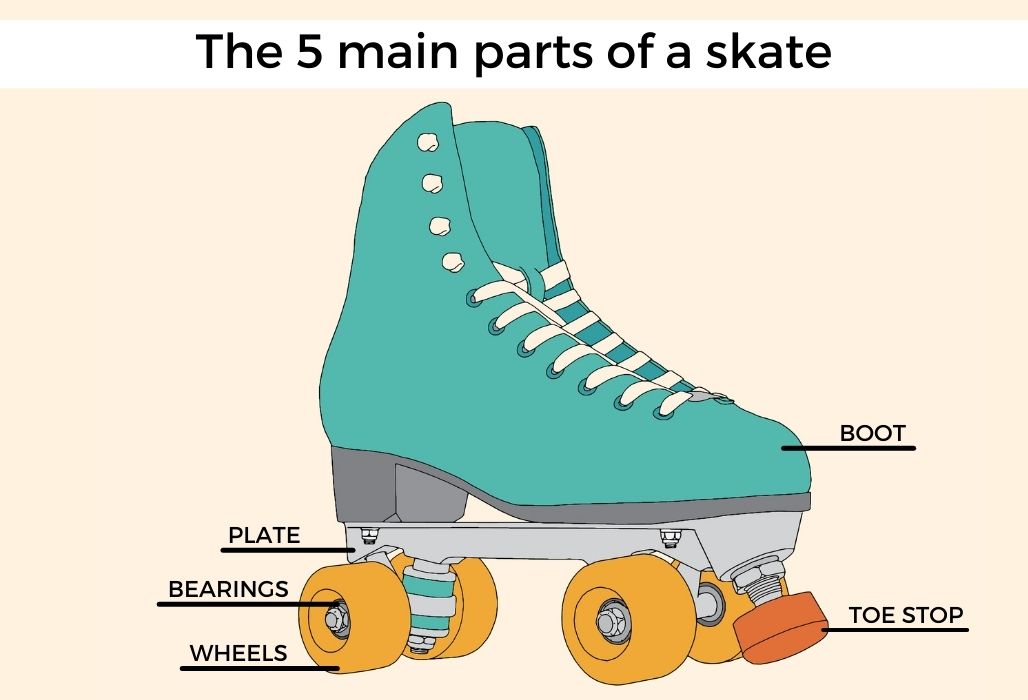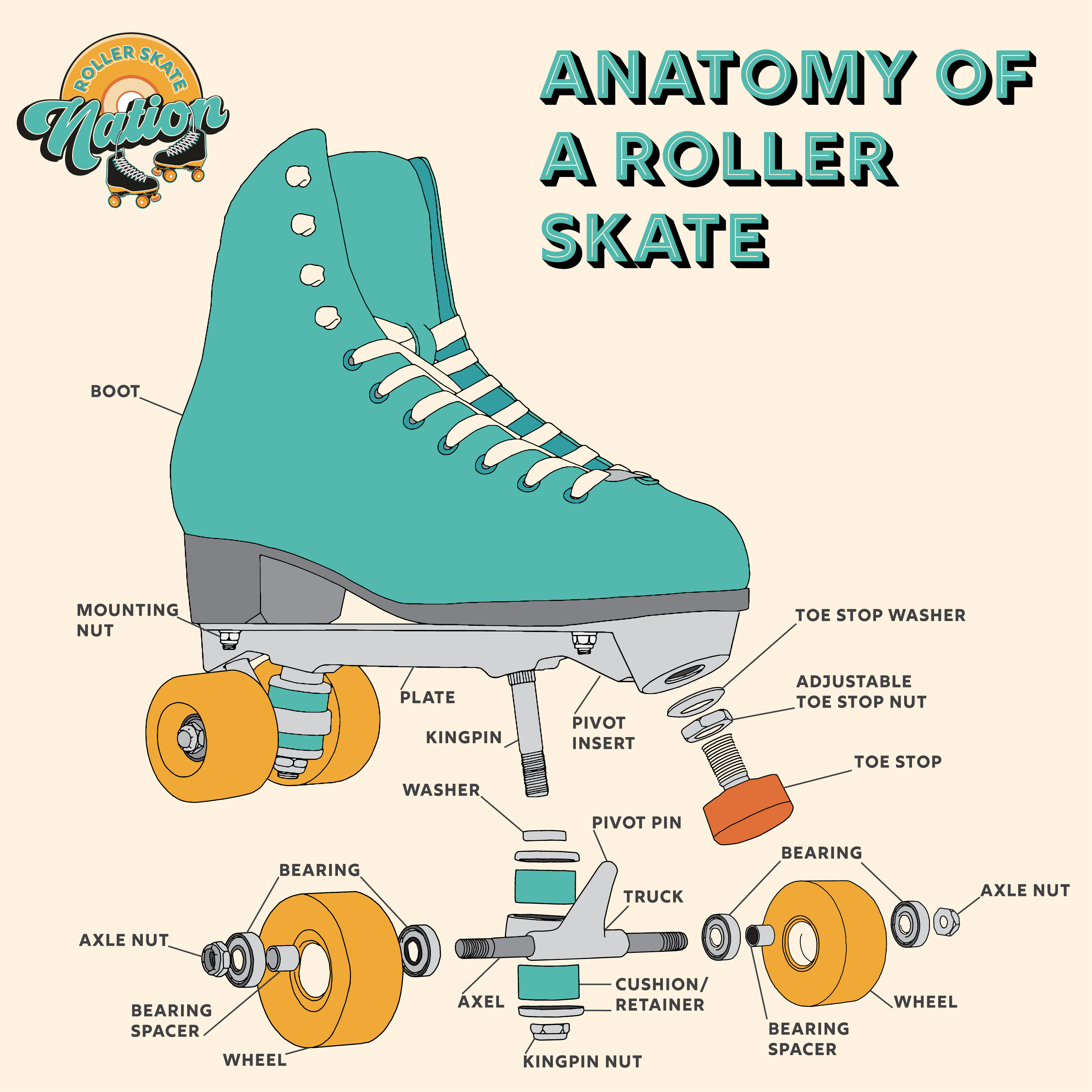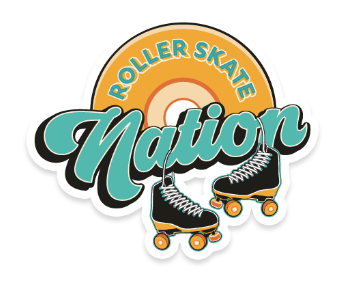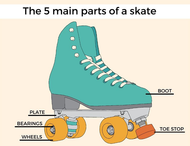The Parts of a Roller Skate
As you begin to learn more about skating, you may be surprised by how technical it can get. If you've ever been confused by skating language and what it all means, you may find this roller skate parts diagram helpful! There are several styles of skates, and the components may vary between each. The main styles are high-top or low-top quad skates and inline skates.
Here are the 5 major parts of a roller skate that are important to have knowledge of even as a beginner skater. Down below, you will find an even more detailed roller skate anatomy graphic that breaks down the smaller components that can impact performance.

1. Boot
Every skate has a boot. Boot uppers (the part of the boot above the sole) can be made of leather, suede or man-made materials such as acrylic. The inside of the boot is called the "lining", and is padded for comfort. Other parts of the boot include the sole, tongue, eyelets and/or hooks, laces, and sometimes a Velcro speed strap for added security in addition to laces. Boots are either high-top (artistic skating) or low-top (speed skating)
2. Plate
The plate is mounted to the bottom of the boot and is what everything else is attached to. Plates are typically metal (aluminum, magnesium, etc) or nylon. Metal plates are more durable, while nylon plates tend to be lighter weight.
Attached to the plate are the trucks, axle, kingpin, cushions (1 cushion makes it a "single action" plate, and 2 cushions makes it a "double action" plate), and in some cases an added jump bar. We will further break down all these components below.
3. Wheels
Skate wheels come in different sizes and hardness levels that vary based on your style of skating. Outdoor wheels are softer than indoor wheels. The larger the wheel, the greater the traction. The smaller the wheel, the more agility the wheel offers.
4. Bearings
Bearings are located inside the wheel hub and help the wheels spin. Each wheel has 2 bearings in it, so a pair of skates uses 16 bearings total. They come in two sizes, 7mm and 8mm. Bearings need to be kept clean in order to continue spinning freely and lasting as long as possible before needing to be replaced.
5. Toe Stops or Jam Plugs
Toe stops are either adjustable or fixed (non-adjustable), and help you slow down your skates. Jam plugs are an alternative to toe stops when the style of skating does not require a toe stop, such as jam skating. Inline skates have a brake at the end of one boot as opposed to in the front of both boots.
The Full Anatomy of a Roller Skate



